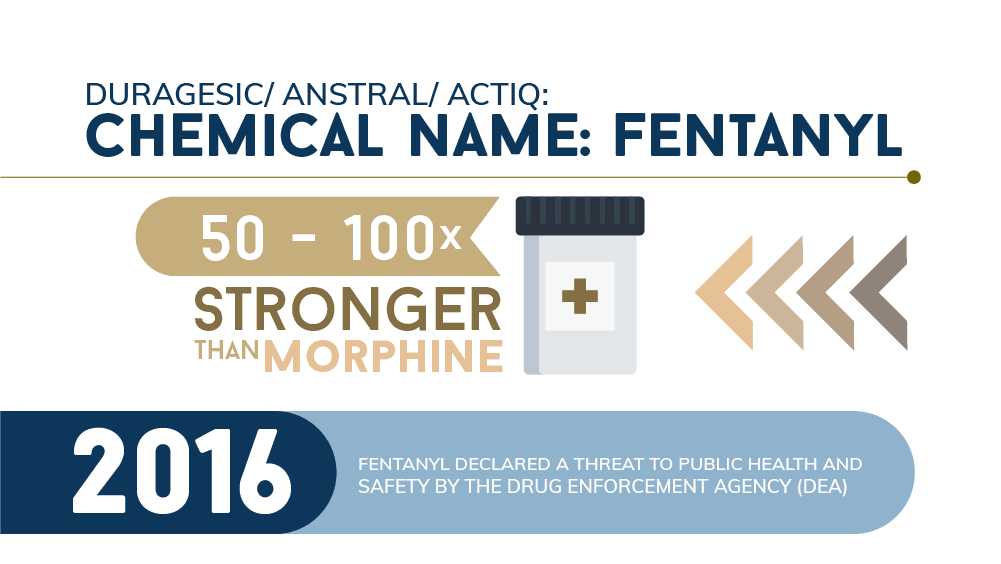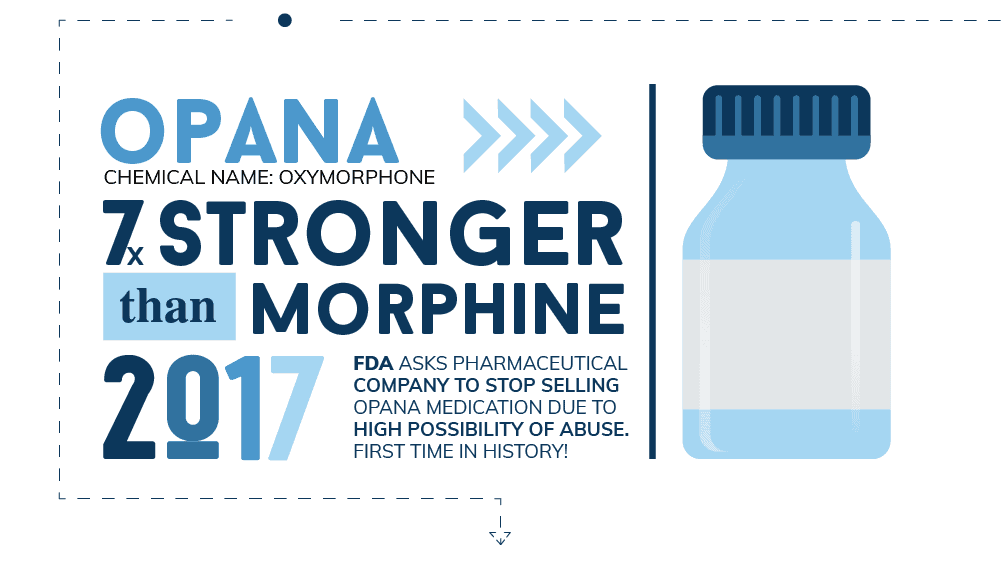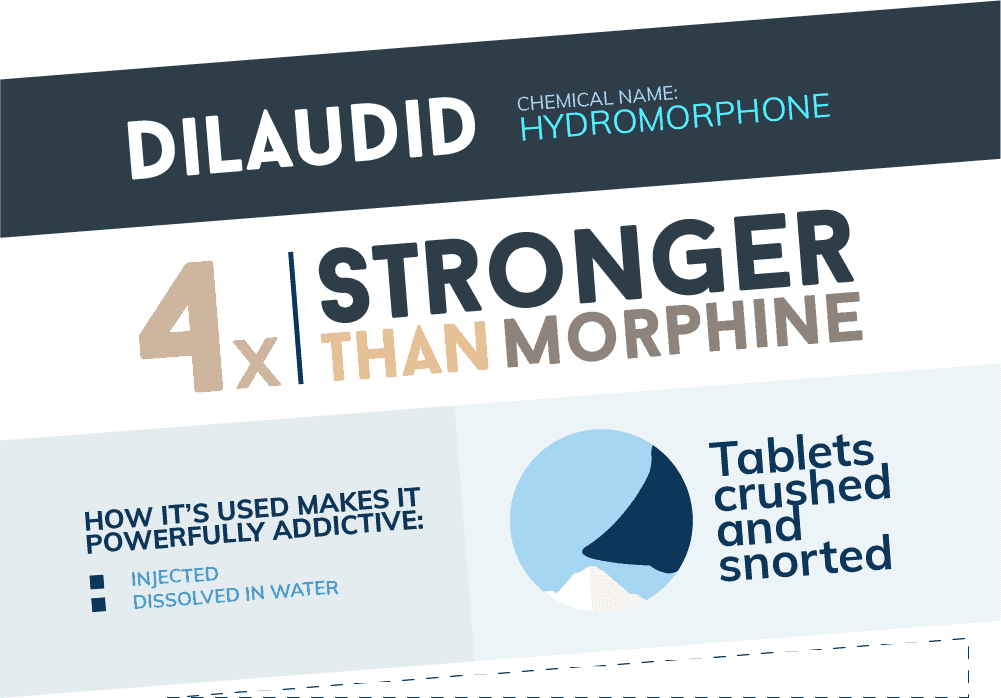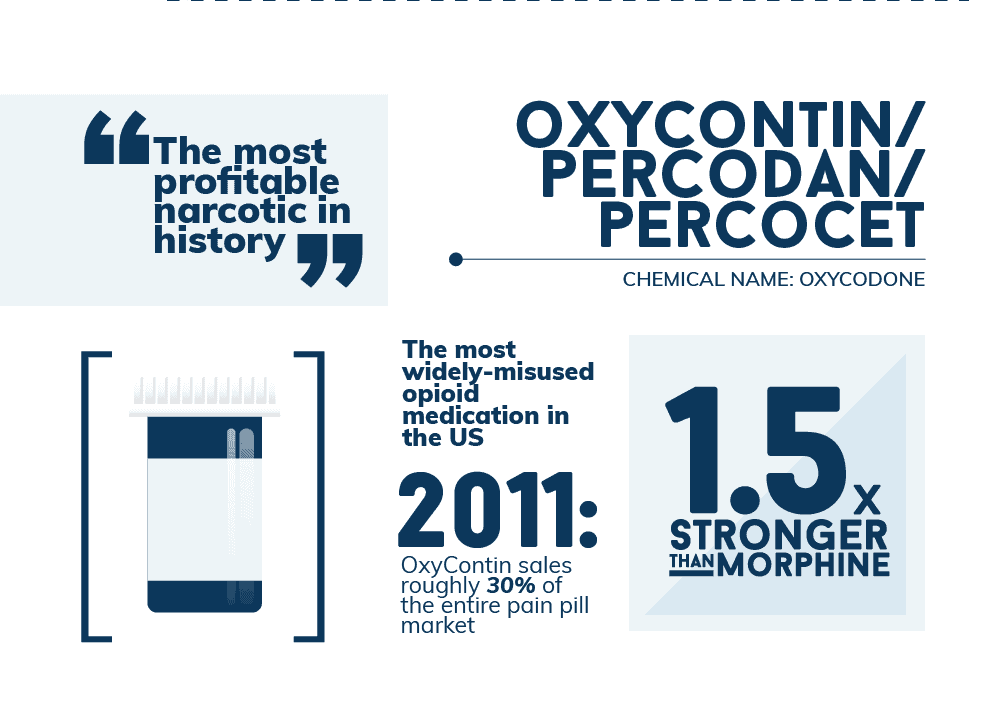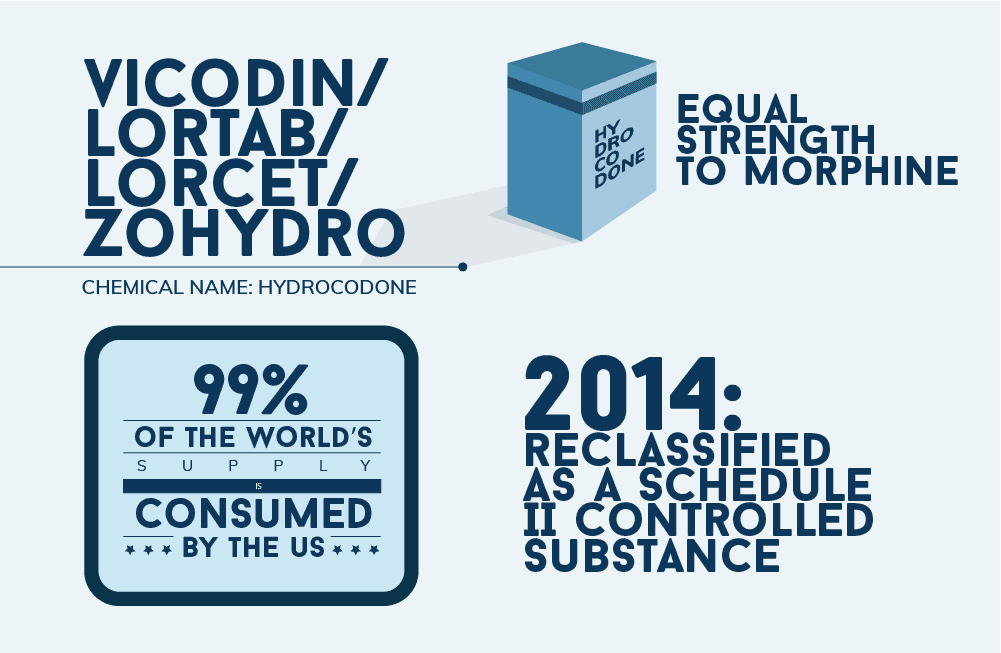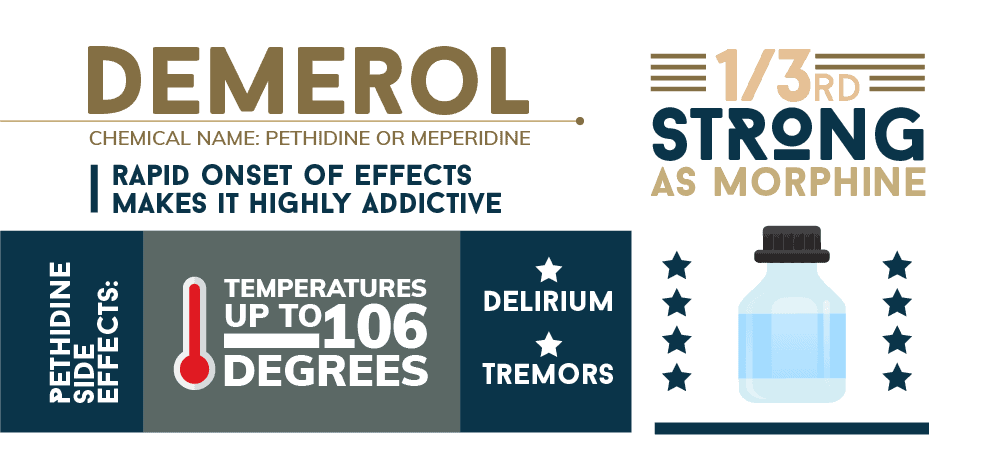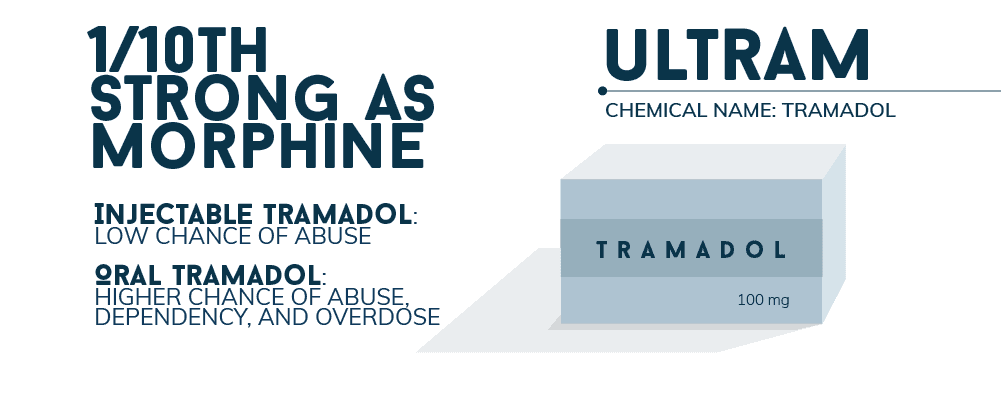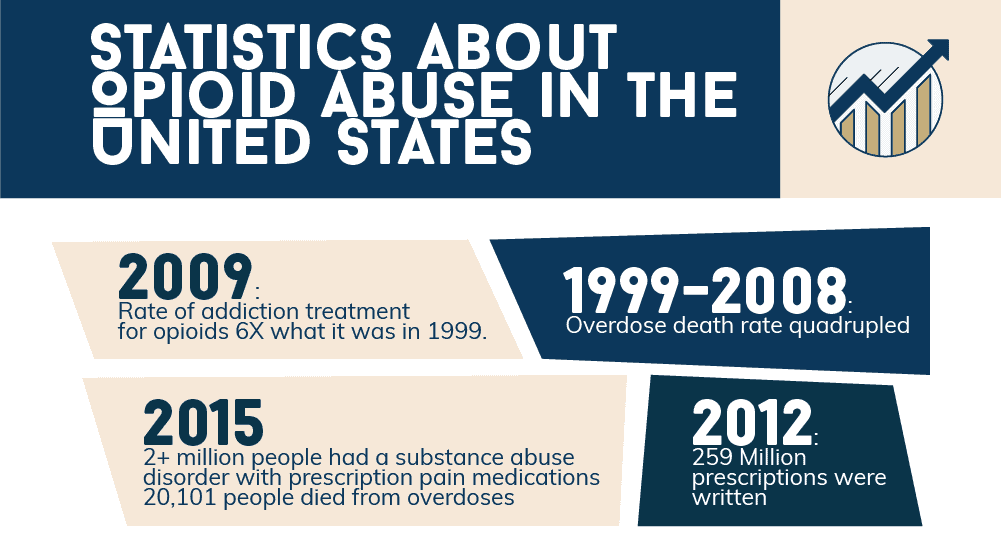Vicodin, OxyContin, Percocet, Fentanyl, and so on…the list of addictive opioid painkillers is extensive. But when you are in pain and attempting to do your due diligence to find out which pain medication is the safest, how do you know which one is right for YOU? One of the factors should be the potential risk of addiction. Although ALL opioids – both illicit and prescription – present some addictive potential, that risk is not equal across the board. The potency of the drug matters, how it is taken, the frequency with which it is taken, and how it interacts with your brain are all factors. Let’s take a closer look at the most addictive commonly-available painkiller medications.
“Get the help you need today. We offer outpatient assistance, so you can maintain your work, family, and life commitments while getting the help you deserve!”
Why Are Opioid Pain Medications Addictive?
“We know of no other medications routinely used for a nonfatal condition that kills patients so frequently.” ~ Dr. Tom Frieden, Director for the Centers for Disease Control and Prevention Opioid painkillers are usually prescribed for moderate-to-severe pain, such as is suffered after surgery or an injury. They work by attaching to specific proteins known as opioid receptors, which are found on nerve cells throughout the body –the brain, gastrointestinal tract, gastrointestinal tract, etc. When the drugs attach to these opioid receptors, they decrease the user’s perception of pain. They also produce a heightened sense of well-being and euphoria. However, over time, two related things happen. First, the user begins to develop a tolerance for the opioid. This means that the medication at its current dose begins to lose effectiveness. In other words, the person will need larger and more frequent doses, in order to achieve the desired painkilling effect. However, this increased dosage and frequency directly causes the second consequence – dependence. The euphoria and sense of well-being that was created was a result of increased production of dopamine – a neurotransmitter associated with reward and motivation. Opioids flood the body with dopamine, in effect, “training” the brain to take the drug again. But dependence means that the body’s natural ability to produce dopamine without the presence of the drug has been disrupted. Whenever usage is discontinued, and opioid-dependent person experiences harshly uncomfortable symptoms of withdrawal. Without the opioid medication, they are unable to feel “normal” or even function. According to the Diagnostic and Statistical Manual of Mental Disorders, 5th edition (DSM-5), tolerance and withdrawal are two of the primary symptoms of a Substance Abuse Disorder. With no other symptoms considered, a person reaching tolerance and experiencing withdrawal already meets the criteria for a mild SUD.
#1 – Duragesic/ Anstral/Actiq: “No Signs of Slowing Down”
“Two grains of salt can be a lethal dose of fentanyl.” ~Idaho State Police Trooper Steven Farley Morphine comparison: 50-100 times stronger Chemical name: Fentanyl How dangerous is fentanyl? In 2016, the United States Drug Enforcement Agency put out a nationwide alert that called fentanyl “a threat to public health and safety”. The high from fentanyl is described as “sharp”, “crisp”, and “reminiscent of cocaine”. Some opioid abusers self-report that after using fentanyl, even smoking heroin didn’t satisfy their addiction. Fentanyl sublingual strips and lozenges are also prescribed, under the brand names Abstral and Actiq. The demand for illicit fentanyl is growing across the United States:
- 2015: Fentanyl was involved in 16% of fatal overdoses in New York City.
- It had never been over than 3%.
- January-June 2016, 39% of NYC’s fatal overdoses were fentanyl-related.
- After July 1, the rate jumped to 47%.
- 2013-2015, Ohio: fentanyl-related deaths quintupled, rising from 92 to 514
- 2013-2014, Maryland: fentanyl-related overdoses more than tripled, going from 58 to 185.
- 2013-2014, Florida: fentanyl deaths doubled, increasing from 185 to 397.
- 2013-2014, the entire US: deaths involving fentanyl rose by 79%.
#2 – Opana: “Risks Outweigh Its Benefits”
|
“We are facing an opioid epidemic — a public health crisis — and we must take all necessary steps to reduce the scope of opioid misuse and abuse.” ~ FDA Commissioner Dr. Scott Gottlieb |
Chemical name: Oxymorphone Morphine comparison: 7 times stronger How dangerous is Opana? In June 2017, the Food and Drug Administration asked Opana’s manufacturer, Endo Pharmaceuticals, to stop selling its extended-release formulation. This is the FIRST time that the FDA has ever asked a drug company to remove an opioid medication from the market because of the possibility of abuse.
#3 – Dilaudid: A Painkilling Killing Drug
|
“Between 1996 and 2007, the DEA…hiked the quota of Hydromorphone by four and a half times.” ~ John Temple, American Pain: How a Young Felon and His Ring of Doctors Unleashed America’s Deadliest Drug Epidemic |
Chemical name: Hydromorphone Morphine comparison: 4 times stronger How dangerous is hydromorphone? Hydromorphone is combined with midazolam to form a drug cocktail used during lethal injection executions. Part of the reason that hydromorphone is so powerfully addictive is because of how it is used. Because it dissolves in water much easier than morphine, addicts typically inject hydromorphone, even going so far as to crush their dilaudid tablets.
“We treat both addiction and co-occurring disorders and accept many health insurance plans. Take a look at our outpatient program today!”
#4 – Oxycontin/Percodan/Percocet – “The Most Profitable Narcotic in History”
|
“Because of its supercharged strength, OxyContin could also be less forgiving than those other drugs; as more people experimented with it, a lot of them wouldn’t be able to walk away… They would get hooked, hurt, or even killed.” ~Barry Meier, Pain Killer: A “Wonder” Drug’s Trail of Addiction and Death |
Chemical name: Oxycodone
Morphine comparison: 1.5 times stronger How dangerous is OxyContin abuse? So misleadingly dangerous that in 2007, Purdue Pharma– OxyContin’s manufacturer – was ordered to pay over $600 million in fines as part of a guilty plea to a criminal charge of misrepresenting OxyContin and intentionally misleading both consumers and doctors. The major charge made during the case was that Purdue Pharma’s sales force had been explicitly instructed to mislead doctors that “OxyContin had less euphoric effect and less abuse potential than short-acting opioids“. In 2011, OxyContin sales accounted for roughly 30% of the entire pain pill market. Oxycodone is the most widely-misused opioid medications in the United States. In 2009, 47% of opioid abusers surveyed responded that they had used OxyContin to get high “at least once” within the past 30 days. Even now, after OxyContin has been reformulated to make injection abuse more difficult, that number is still high at 30%. 24% of opioid addicts surveyed – nearly 1 in 4 – report being able to circumvent the Percocet abuse deterrent reformulation. Now, OxyContin is trying to make a huge comeback, airing several commercials during the 2016 Super Bowl.
#5 – Vicodin/Lortab/Lorcet/Zohydro – “America’s Pain Pill”
|
“Three Vicodin. That was all in took. I was in love.” ~ Joshua Lyon, Pill Head: The Secret Life of a Painkiller Addict |
Chemical name: Hydrocodone Morphine comparison: Equal strength How dangerous is Vicodin drug abuse? Dangerous enough that it was a major plot line – almost an established character – on several episodes of the smash TV series, “House, M.D.”. Hydrocodone, in all of its brand-name medications, seems to be uniquely American pain remedy. The United States consumes 99% of the world’s supply of Hydrocodone. The risk of Hydrocodone misuse is so high that in 2014, it was reclassified from a Schedule III drug to a Schedule II controlled substance. Typically, the hydrocodone found in medications is combined with acetaminophen, aspirin, naloxone, or ibuprofen, but in 2014, Zohydro ER was released – the first pure hydrocodone medication in the United States. Right now, hydrocodone is prominently in the news again, after golf legend Tiger Woods was arrested in early June for Driving Under the Influence of prescription medicines, including Vicodin.
#6 – Demerol – the World’s First Synthetic Opioid
Chemical name: Pethidine or meperidine Morphine comparison: 1/3rd as strong How dangerous is Demerol? The side effects of pethidine are unique among opioids – temperatures up to 106°, seizures, delirium, and tremors. Although it was originally believed to have a lower addiction potential than other opioid medications, Demerol is actually more likely to be abused, because of its rapid onset of effects. Due to the emergence of other synthetic opioids, Demerol is not as popular as it once was, but it remains the most widely-used opioid medication during labor and delivery.
#7 – Ultram – The Unsafe “Safe” Opioid
|
“I don’t think that people realize how potentially risky taking tramadol is. I think it’s because it’s a prescription drug – people assume it’s safe.” ~Northern Ireland’s State Pathologist |
Chemical name: Tramadol Morphine comparison: 1/10th as strong How dangerous is Ultram? The risk of suicide for medications containing tramadol is so high that in 2010, the FDA added a warning label stating: “Tramadol-related deaths have occurred in patients with previous histories of emotional disturbances or suicidal ideation or attempts, as well as histories of misuse of tranquilizers, alcohol, or other (central nervous system-active) drugs.” Because Tramadol is so much less potent than morphine, it seems surprising that it is such an addiction risk. But only injectable tramadol has a low abuse potential. Oral tramadol, on the other hand, is processed differently by the liver, making dependence, misuse, addiction, and overdose much more likely. In fact, some users may prefer Tramadol to stronger opioids like Oxycodone. A 2012 study gave two groups of opioid addicts Oxycodone or 400 mg of tramadol – roughly FOUR TIMES the normal therapeutic dose. The next day, study participants were told they could have the drugs again— in increments —if they continuously click a computer mouse.
- 7800 clicks would deliver ALL the drug.
- 56% of those in Tramadol group clicked 5300 times or more.
- Just 11% of those in the Oxycodone group did so.
Statistics about Opioid Abuse in the United States
It is estimated that between 59,000 and 65,000 Americans died due to fatal drug overdoses in 2016. If that estimate is correct, it represents an over 14% year-over-year increase over 2015’s 52,404 deaths. Drug overdoses were already the leading cause of accidental death in the United States, and this would be a trend in the wrong direction. Looking at some of the statistics released by the American Society of Addiction Medicine, we learn that:
- In 2015, over 2 MILLION Americans had a substance abuse disorder involving prescription pain medications.
- That same year, 20,101 people died because of fatal prescription pain reliever overdoses.
- Between 1999 and 2008, the overdose death rate nearly quadrupled.
- Not coincidentally, during almost the same timeframe, 1999 through 2010, sales of prescription opioids DID quadruple.
- In fact, in 2012, 259 MILLION opioid prescriptions were written.
- To put that number in perspective, it was enough to give every single adult in the United States their own personal bottle of pain medication.
- Again, not coincidentally, in 2009, the rate of addiction treatment for opioids was six times what it was in 1999.
- Women are at increased risk of prescription opioid misuse, because they are more likely than men to:
- Suffer from chronic pain
- Be prescribed higher doses of opioids
- Use prescription painkillers for longer periods of time
- Become opioid-dependent
- Between 1999 and 2010, 48,000 women died because of prescription opioid overdoses.
“We accept many health insurance plans. You can get your life back in order with our outpatient program today!”
What Are Some of the Common Signs of Opioid Abuse and Addiction?
Since all opioids affect the user’s brain in similar ways, the warning signs of opioid abuse and addiction are similar, regardless of the specific drug of choice. Early warning signs of opioid misuse or abuse:
- Agitation
- Anxiety
- Mood Swings
- Confusion
- Loss of Motivation
- Abnormal Libido
- Insomnia
- Fatigue
- Yawning
- Excessive Sweating
- Skin-Crawling Sensation
- Runny Nose
Late-stage warning signs:
- Dilated Pupils
- Goosebumps
- Sneezing
- Nausea/Vomiting/Diarrhea
- Abdominal Cramping
Behavioral warning signs:
- Secretive behavior
- Loss of interest in formally-enjoyed activities
- Disinterest in personal hygiene
- Ignoring work, family, or social obligations
- Missing money
- Driving Under the Influence charges
- Multiple empty pill bottles
- Doctor shopping
- Faking injuries or illness
How to Recognize an Opioid Overdose
It is frightfully easy to unintentionally overdose on a prescription pain medication. With the strongest drugs, such as fentanyl, the difference between a recreational high and a potentially-fatal overdose can be measured in micrograms. The risks are even higher when opioids are taken in combination with other depressants, such as alcohol or tranquilizing benzodiazepines – Xanax, Valium, Klonopin, etc. The ability to recognize an opioid overdose can literally be the difference between life and death. The World Health Organization refers to these signs as the “opioid overdose triad”:
- Pinpoint pupils
- Unconsciousness
- Depressed breathing
Other signs might include blueish or purplish skin, lips, or fingernails, vomiting, choking sounds (the “death rattle”), and unresponsiveness to pain stimulus. An overdose is ALWAYS a medical emergency.
Why Is It Important to Know Which Prescription Painkillers Are the Most Addictive?
Dependence on or an addiction to prescription opioid painkillers can happen to anyone. Knowing how to identify which medications carry the biggest potential risk of dependence and addiction can help you avoid making a serious misstep. The risk of drug diversion is even higher. If your history or your genetics make you more vulnerable to addiction, you should discuss with your doctor alternatives to prescription opioids. Some factors that can increase the risk include:
- A family or personal history of drug or alcohol abuse
- Exposure to traumatic events – death, serious injury, accidents, natural disasters, war
- Co-occurring mental disorders such as anxiety, depression, PTSD, or bipolar disorder
If you are already struggling with your prescription opioid use, then you need specialized, evidence-based treatment that can help you safely regain your sobriety and restore balance and control to your life.
What Did you Think About This Blog?
Give it a Rating!
Full Infographic:
 https://www.dhss.delaware.gov/dsamh/files/si2013_dsm5foraddictionsmhandcriminaljustice.pdf https://www.samhsa.gov/disorders/substance-use https://www.drugabuse.gov/publications/media-guide/science-drug-abuse-addiction-basics https://www.cbsnews.com/news/fda-opioid-epidemic-endo-pharmaceuticals-opana-er/ https://www.cnn.com/2016/12/08/health/opioid-deaths-2015/index.html https://www.9news.com/news/health/too-much-or-not-enough-doctors-cautious-in-opioid-prescribing/444338327 https://www.upi.com/Health_News/2017/06/16/Study-Opioid-drug-users-trying-but-failing-to-avoid-Fentanyl/7641497625502/ https://www.idahostatesman.com/news/local/article156730094.html https://abcnews.go.com/US/fentanyl-deaths-spiked-us-sign-slowing/story?id=44554601 https://www.pewtrusts.org/en/research-and-analysis/blogs/stateline/2016/04/01/as-fentanyl-deaths-spike-states-and-cdc-respond https://www.nejm.org/doi/full/10.1056/NEJMc1204141 https://www.latimes.com/projects.ic/oxycontin-part1/ https://www.statnews.com/2016/09/22/abbott-oxycontin-crusade/ https://motherboard.vice.com/read/how-big-pharma-hooked-america-on-legal-heroin https://time.com/4213760/super-bowl-opioid-commercial/ https://www.cdc.gov/mmwr/preview/mmwrhtml/mm6450a3.htm?s_cid=mm6450a3_w https://www.drugabuse.gov/related-topics/trends-statistics/overdose-death-rates https://www.asam.org/docs/default-source/advocacy/opioid-addiction-disease-facts-figures.pdf https://www.latimes.com/projects/la-me-oxycontin-part2/ https://www.ajog.org/article/S0002-9378%252802%252970185-3/abstract https://www.wsj.com/articles/tramadol-the-opioid-crisis-for-the-rest-of-the-world-1476887401 https://www.medpagetoday.com/PainManagement/PainManagement/43554?isalert=1&uun=g361192d464R5 https://www.asam.org/docs/default-source/advocacy/opioid-addiction-disease-facts-figures.pdf https://www.cnn.com/2016/05/12/health/opioid-addiction-history/index.html https://www.cnn.com/2017/06/08/health/fda-opioid-opana-er-bn/index.html https://www.cnn.com/2014/07/24/justice/lethal-injection-controversy/index.html https://stopoverdose.org/
https://www.dhss.delaware.gov/dsamh/files/si2013_dsm5foraddictionsmhandcriminaljustice.pdf https://www.samhsa.gov/disorders/substance-use https://www.drugabuse.gov/publications/media-guide/science-drug-abuse-addiction-basics https://www.cbsnews.com/news/fda-opioid-epidemic-endo-pharmaceuticals-opana-er/ https://www.cnn.com/2016/12/08/health/opioid-deaths-2015/index.html https://www.9news.com/news/health/too-much-or-not-enough-doctors-cautious-in-opioid-prescribing/444338327 https://www.upi.com/Health_News/2017/06/16/Study-Opioid-drug-users-trying-but-failing-to-avoid-Fentanyl/7641497625502/ https://www.idahostatesman.com/news/local/article156730094.html https://abcnews.go.com/US/fentanyl-deaths-spiked-us-sign-slowing/story?id=44554601 https://www.pewtrusts.org/en/research-and-analysis/blogs/stateline/2016/04/01/as-fentanyl-deaths-spike-states-and-cdc-respond https://www.nejm.org/doi/full/10.1056/NEJMc1204141 https://www.latimes.com/projects.ic/oxycontin-part1/ https://www.statnews.com/2016/09/22/abbott-oxycontin-crusade/ https://motherboard.vice.com/read/how-big-pharma-hooked-america-on-legal-heroin https://time.com/4213760/super-bowl-opioid-commercial/ https://www.cdc.gov/mmwr/preview/mmwrhtml/mm6450a3.htm?s_cid=mm6450a3_w https://www.drugabuse.gov/related-topics/trends-statistics/overdose-death-rates https://www.asam.org/docs/default-source/advocacy/opioid-addiction-disease-facts-figures.pdf https://www.latimes.com/projects/la-me-oxycontin-part2/ https://www.ajog.org/article/S0002-9378%252802%252970185-3/abstract https://www.wsj.com/articles/tramadol-the-opioid-crisis-for-the-rest-of-the-world-1476887401 https://www.medpagetoday.com/PainManagement/PainManagement/43554?isalert=1&uun=g361192d464R5 https://www.asam.org/docs/default-source/advocacy/opioid-addiction-disease-facts-figures.pdf https://www.cnn.com/2016/05/12/health/opioid-addiction-history/index.html https://www.cnn.com/2017/06/08/health/fda-opioid-opana-er-bn/index.html https://www.cnn.com/2014/07/24/justice/lethal-injection-controversy/index.html https://stopoverdose.org/

